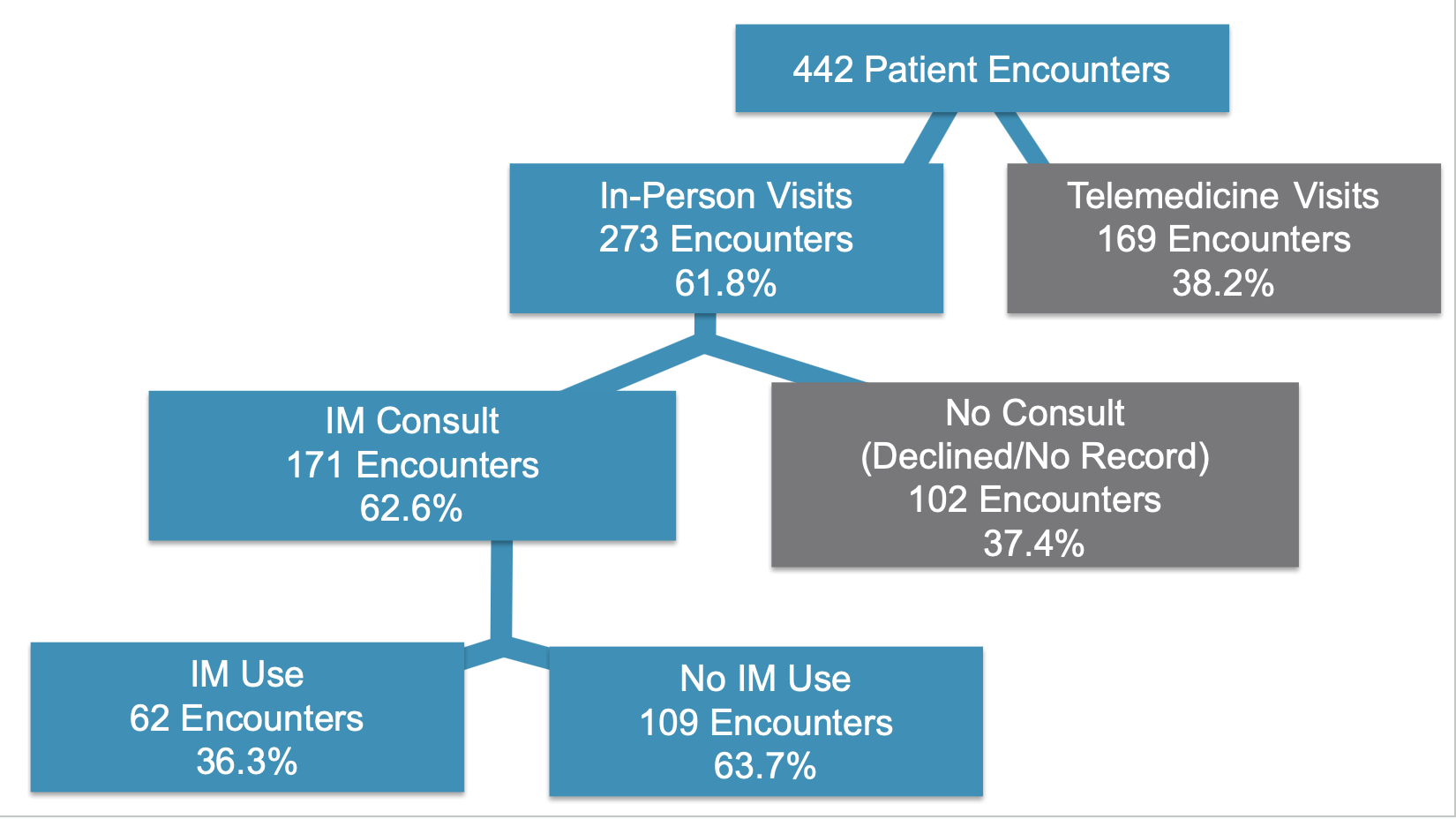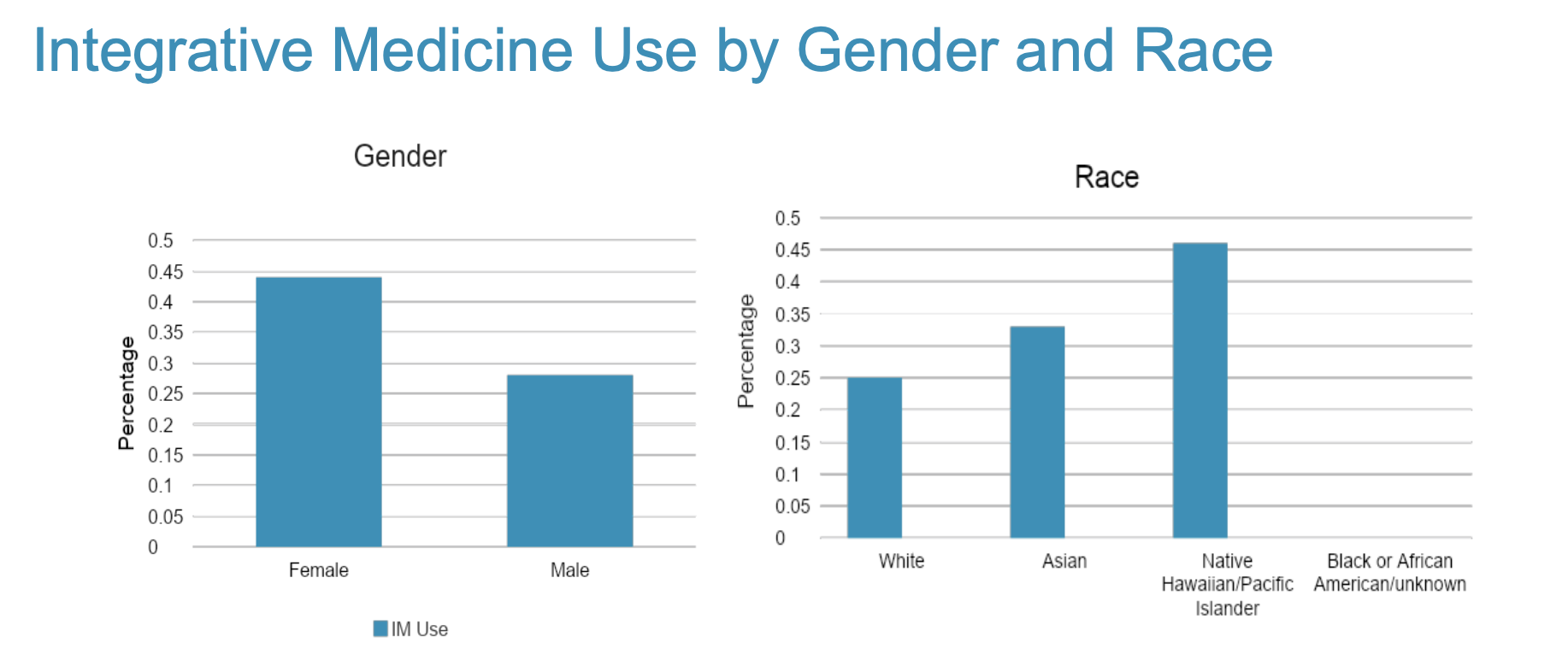Hematology/Oncology 1: Pediatric Oncology
Session: Hematology/Oncology 1: Pediatric Oncology
106 - Utilization of Integrative Medicine Services among Survivors of Childhood, Adolescent and Young Adult (AYA) Cancer
Saturday, April 26, 2025
2:30pm - 4:45pm HST
Publication Number: 106.7093
Shari K. Ho, Kapi'olani Medical Center for Women and Children, Kaneohe, HI, United States; Kelley Hutchins, University of Hawaii, John A. Burns School of Medicine, Honolulu, HI, United States; Andrea Siu, Hawaii Pacific Health, Honolulu, HI, United States
.jpg)
Shari K. Ho, Bachelor of Science (she/her/hers)
Student
Kapi'olani Medical Center for Women and Children
Kaneohe, Hawaii, United States
Presenting Author(s)
Background: Continuing survivorship focused care for adolescent and young adult (AYA) cancer survivors is essential, as they are at significant risk of acute- and long-term side effects after treatment. Integrative medicine (IM) has shown to be beneficial for treating side effects among adult cancer survivors. Information supporting the utilization of IM among AYA cancer survivors, however, is limited.
Objective: To analyze the utilization of IM services, as well as anxiety and depression screening results among an AYA cancer survivor population and to analyze the different IM modalities used within the clinic, including Aromatherapy, Thought Feeling Therapy, and Healing Touch.
Design/Methods: A retrospective chart review of patients (n=146) treated in the Multidisciplinary (MDC) AYA Survivorship Clinic at Kapi’olani Medical Center for Women and Children (KMCWC) between 2018 and 2023 was conducted. Patients were between 15 and 39 years of age. Only in-person visits were included in the analysis. Utilization of IM was determined, as well as the specific modality used at each visit. PHQ-9 and GAD-7 scores were collected upon entry into the clinic and prior to any offering or utilization of IM services to screen for depression and anxiety.
Results: The majority (62.6%) of patients received a consultation from the IM provider and 36.2% chose to utilize the IM service. Patients who chose to utilize the IM service had significantly higher depression (p < 0.018) and anxiety (p=0.047) screening scores than those who elected not to use the services. Females and those of Native Hawaiian and Pacific Island descent had the highest utilization of IM services. Among those who chose to utilize this IM service, the majority of patients chose to use Aromatherapy as their preferred treatment.
Conclusion(s): IM services were utilized among a population of AYA cancer survivors when offered in a MDC setting. For patients with higher depression and anxiety screening scores, IM services may be a useful tool for managing these adverse late effects. Future studies should be conducted in a larger AYA patient population to assess the effectiveness of IM services for depression and anxiety and physical effects such as pain and chronic fatigue.
Figure 1
 Flow chart of patients analyzed in the study. Only in-person visits were included, as IM consultations occur in-person only. Of the patients who received this consultation, 36.3% chose to use one or more of the IM services provided at the MDC AYA Survivorship Clinic.
Flow chart of patients analyzed in the study. Only in-person visits were included, as IM consultations occur in-person only. Of the patients who received this consultation, 36.3% chose to use one or more of the IM services provided at the MDC AYA Survivorship Clinic.Figure 2
 Gender and race were categorized by IM usage among patients who were treated in the MDC AYA Survivorship Clinic from 2018-2023. More females chose to use this service than males, as well as more patients of Native Americans/Pacific Islander descent.
Gender and race were categorized by IM usage among patients who were treated in the MDC AYA Survivorship Clinic from 2018-2023. More females chose to use this service than males, as well as more patients of Native Americans/Pacific Islander descent.Table 1
 PHQ-9 and GAD-7 scores were categorized by IM usage among patients who were treated in the MDC AYA Survivorship Clinic from 2018-2023. The median depression and anxiety scores of the patients who chose to use IM were significantly higher than the patients who did not choose to use IM (p < 0.018, 0.047, respectively).
PHQ-9 and GAD-7 scores were categorized by IM usage among patients who were treated in the MDC AYA Survivorship Clinic from 2018-2023. The median depression and anxiety scores of the patients who chose to use IM were significantly higher than the patients who did not choose to use IM (p < 0.018, 0.047, respectively).
